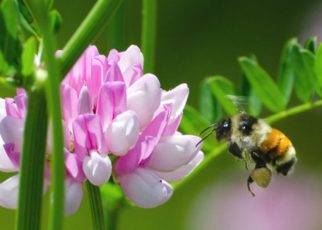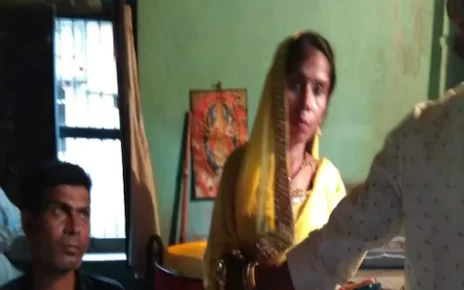While most U.S. crops are pollinated by honeybees, lately there’s been trouble with the important work these European bees do. There have been diseases, mites, aggressive strains of Africanized honey bees, and lately yet another major blow: colony collapse disorder.
These trends are enough to make home gardeners concerned: Are there enough bees around to pollinate backyard crops and flowers?
The Unsung Work of Native Bees
The answer is “yes,” but the pollination will come from a source you may not expect: wild native bees. These are the bees that farmers and growers have relied on for generations before European honeybees made landfall in North America.
There is an impressive diversity of native bees across North America: over 4,000 species have been identified, ranging from one-eighth of an inch long to more than an inch long. While they may not look like a typical honeybee — they can be dark brown, black, metallic green, blue and can have stripes not only of yellow, but also of red, white or orange — native bees do a yeoman’s job of pollinating plants.
Wild Bees Don’t Produce Honey, But do a Lot of Pollinating Work
Some names given to the bees hint at the way these bees build nests: plasterer bees, leaf-cutter bees, mason bees, carder bees, digger bees, and carpenter bees. Other names point to the way these bees look, act, or the flowers they prefer: such as cuckoo bees (that lay eggs in the nests of other bee species, much like the cuckoo bird does), sweat bees (that drink perspiration), or bumblebees (from their sound), and squash bees (that rely on cucurbits plants for their existence).
These bees neither live in large communal hives nor produce enough honey to harvest. Many live in small communities in tiny holes in the ground or in wood, collect both pollen and nectar (as opposed to just nectar, as the honeybees collect), and many more live in solitary nests and raise their young alone. Because these bees don’t have a hive to defend, they are gentle, and rarely sting.
Welcoming Native Bees on Your Land
With very little work on your part, you can make your backyard welcoming to these native bees. Here’s how:
Provide Shelter. Native bee pollinators are divided into two major groups: ground and cavity nesting. For cavity nesters, make sure there are plenty of trees, hollow stems and plants on your property. Leafcutter bees, for example, will dig holes in wood or hollow plant stems. You can provide simple blocks of wood with holes drilled in them to encourage nesting. For ground dwelling species, avoid tillage or heavy mulch. Leave un-landscaped areas, such as a meadow, to provide nesting area for bees.
Provide Access to Food. Hedgerow flowering shrubs provide nectar and pollen in the early spring; perennials allow year-round food sources. If you can stand it, leave some weedy areas in the corner of your yard, or create a wildflower meadow with perennial flowers.
Go Light on Pesticides. Bees, being insects, don’t do well when insecticide is sprayed wholesale on plants – even organic pesticides can be harsh on native bees. It is, however, possible to use pesticides in ways that does less damage to bees. If you must use pesticides, apply during the evening or any time the bees are not active.





